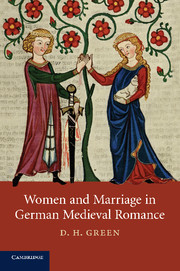2 - Feminisation in the twelfth century
Published online by Cambridge University Press: 09 November 2009
Summary
In this chapter we sharpen our focus in two respects. The first of these is suggested by the word ‘feminisation’ in the title. In Chapter 1 we were concerned with a predominantly antifeminine tradition in the Middle Ages, denigrating and marginalising women, and with possibilities of defending them which, however, rarely went beyond suggesting that men were similarly faulty and were therefore on an equal footing. Now we go an important step further by considering ways in which, in religious life as well as in literature, women could be regarded as playing a positive role for which they were especially fitted and in which they could serve as examples for men. The part they played in the life of the Church now became far greater and had to be taken into account, both institutionally and spiritually. This feminisation found expression in the growing cult of Mary and in incarnational theology, but also extended, especially with the Cistercians, to the application of feminine imagery to Christ. In literature disquiet was voiced over fluid boundaries between the sexes, particularly the attribution of feminine qualities to men. The fear that this might be taken as effeminacy could render courtliness suspect as opposed to knightly manliness, a suspicion which the romance sought to remove by suggesting that ‘feminised’ was not synonymous with ‘effeminate’.
- Type
- Chapter
- Information
- Women and Marriage in German Medieval Romance , pp. 31 - 60Publisher: Cambridge University PressPrint publication year: 2009



